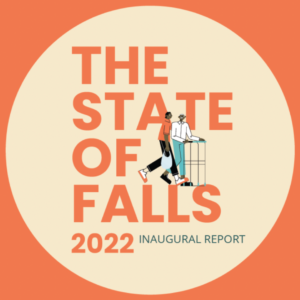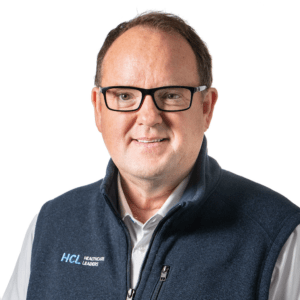Automate, automate, automate
Ready or not, long-term care providers are competing in a new game. While the players and objectives remain unchanged, the playing field has new obstacles, the rules are more numerous, and the scoring is increasingly more public. Accordingly, all teams need to embrace innovative approaches to gain leverage and maintain a competitive advantage. Health information technology (HIT) represents those new approaches for many long-term care providers prepared to step beyond what is required by state and federal regulations. As many early adopters can attest, a point of care (POC) electronic data capture system is an excellent starting point for an overall effective HIT strategy.
What is a POC system?
A POC documentation system does not replace existing clinical systems. Instead, it’s a front-end application that improves not only the process for documentation, but also the completeness and accuracy of resident assessment data. Through the use of handheld devices, wall-mounted touch screens, or other portable units, caregivers obtain and document resident observations at the point of care. Some POC electronic data collection systems offer visual prompts that serve as reminders by highlighting assessments required throughout the shift. POC systems eliminates lost paper forms, illegible entries, “copycat” charting, and time spent by MDS coordinators searching for missing assessments. The true value of POC technology, however, is real-time access to information that is otherwise inaccessible in a manual environment. Ultimately, it’s the access to timely, accurate information about each resident’s condition that improves the quality of care provided.
Advantages of POC systems
POC systems simplify the documentation collection process, which increases documentation compliance. Through increased compliance, long-term care facilities are able to achieve significant improvements in documentation accuracy, staff efficiency, and resident outcomes. Additional benefits include increased reimbursement, lower risk of liability, and improved staff retention.
Resident assessments are the foundation upon which care plans are developed. Many facilities find that with manual systems only 70% of the needed documentation is completed. Consequently, 30% of critical information necessary to make important decisions about resident care plans is missing. With POC data collection, caregivers are prompted to obtain specific assessments for each resident, every shift, on a predetermined schedule. System prompts focus caregiver attention to assessment documentation amid the whirlwind of distractions in caring for multiple highly dependent residents.
Real-time access to consistent, complete, and accurate assessment data affords nursing staff a much clearer picture of each resident. As a result, adverse trends are readily identified, treatment plans are modified proactively, and more complicated (and often expensive) interventions are averted. Through dashboard displays available on desktops, nurses can view current resident status and ensure that residents with more immediate needs receive attention first. Some systems include electronic alerts, which notify nursing staff in the event of a negative trend or change in a resident’s status. For example, if a resident’s food intake is steadily decreasing, an alert is automatically generated and electronically communicated to the appropriate staff person. In this case, an alert would prompt an intervention before the situation turned to dehydration or malnutrition.
Accurate reimbursement is another key advantage to a POC system. Proper reimbursement is increasingly dependent upon a facility’s ability to accurately document each resident’s health status. With ADL scores and mood/behavior observations accounting for much of the current reimbursement formula, long-term care facilities must have confidence in the accuracy of assessment data. Furthermore, as pay-for-performance initiatives roll out, facilities will be required to demonstrate the care provided in correlation with the resident’s condition. An electronic POC system allows for quick retrieval of resident data to satisfy auditors, payers, surveyors, and any manner of legal inquiry.
From a staff perspective, an automated POC system eases the task of obtaining and documenting resident assessments contributing to higher job satisfaction and possibly higher staff retention—a critical factor in quality of care.
Finding a POC solution
In order to select the appropriate POC solution, it’s important to identify existing shortcomings in the current manual processes and prioritize them accordingly. For example, are incomplete ADLs a concern? Is inaccurate/incomplete MDS data an issue? Are frequent communication breakdowns between CNAs and nurses causing concerns with regard to resident care? Do family members regularly complain about lack of adequate care? Can the facility generate adequate support for quality of care provided during surveys, inspections, audits, and family inquiries? Is the case-mix index reflective of actual resident acuity? While all these deficiencies can be resolved with a POC system, it’s important for long-term care facilities to prioritize and tackle one major concern at a time.
Once the underlying “hot-button” issues are identified and prioritized, the process of selecting a solution can begin. Start with Web-based research and initiate communication with area facilities. Another good source of baseline information is buying guides provided by various trade publications such as Long-Term Living. Fortunately, software providers have recognized the unique circumstances of providing resident care in a long-term setting and design systems that meet the specific demands of such environments.
When selecting a vendor, choose wisely. In addition to standard inquiries regarding references, financial solvency, leadership, and technical expertise, choose a vendor that will approach the project as a partner. Ideally, the POC system selected will be scalable and grow with both the facility and with future advances in technology. Be realistic in assessing the technical expertise of existing staff. Many long-term care facilities are entrenched in manual documentation processes, and introducing automation will be a significant cultural change. The right vendor will offer recommendations in handling sensitive issues relating to change. After all, staff buy-in is a significant prerequisite for a successful implementation.
For long-term care facilities with limited technical infrastructure or IT experience, consider vendors that “host” the software. When software is hosted by the vendor, the facility avoids the need to purchase expensive equipment and hire IT personnel to maintain the system. In addition, the facility will be confident that system monitoring, backups, maintenance, and future updates are all handled properly.
New generation of functionality
POC documentation systems were initially established in response to the need for accurate, complete, and timely MDS data submissions. Since then, POC systems have evolved to offer more sophisticated functionality. Clinical intelligence, wound management, and time and attendance applications are now offered through POC system vendors.
Clinical intelligence is an integrated data analysis tool that can pour over millions of resident observations entered by staff and quickly spot potential resident issues before they become serious problems. Once resident assessments are stored electronically, the potential for data manipulation and analysis is unlimited. For example, in response to increasing concern regarding pressure ulcers, a specific wound management tool has been designed. This tool uses observations entered by staff to identify residents with a high potential for wounds. If a wound occurs, the system recommends treatment protocols and tracks compliance. By implementing this feature, facilities can reduce the number of wounds that occur and heal the ones that do occur faster. In the future, facilities in a position to track, trend, and report on millions of observations, will also be in a position to make improvements in quality of care.
Next frontier
Long-term care facilities have made tremendous strides over the past decade to improve quality of care for residents. Remarkably, these strides have been accomplished, for the most part, without significant investments in technology. The next frontier of progress, however, may be dependent upon the industry’s ability to harness the power of technology—technology that today is both designed and delivered to the meet the specific challenges of operating in the long-term care industry. That very technology may differentiate one long-term care facility from the next in the future.
To send your comments to the author and editors, e-mail triplett0109@iadvanceseniorcare.com.
I Advance Senior Care is the industry-leading source for practical, in-depth, business-building, and resident care information for owners, executives, administrators, and directors of nursing at assisted living communities, skilled nursing facilities, post-acute facilities, and continuing care retirement communities. The I Advance Senior Care editorial team and industry experts provide market analysis, strategic direction, policy commentary, clinical best-practices, business management, and technology breakthroughs.
I Advance Senior Care is part of the Institute for the Advancement of Senior Care and published by Plain-English Health Care.
Related Articles
Topics: Articles , Technology & IT











